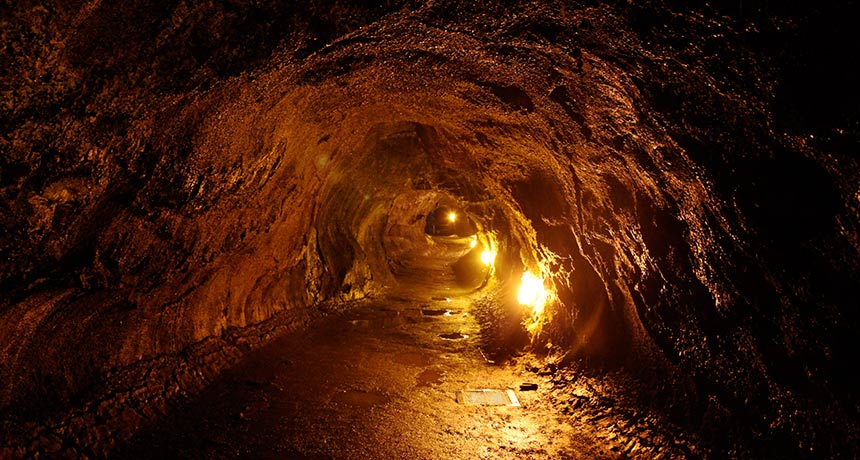Moon’s lava tubes could be colossal
Caverns might make spacious home for moon colonists

INNER TUBE Lava tubes inside the moon could remain structurally stable up to several kilometers across, new research suggests. Similar tubes that crisscross the ground around Hawaiian volcanoes, shown, only reach a few meters across.
Matt Haughey/Flickr (CC BY-NC-SA 2.0)







